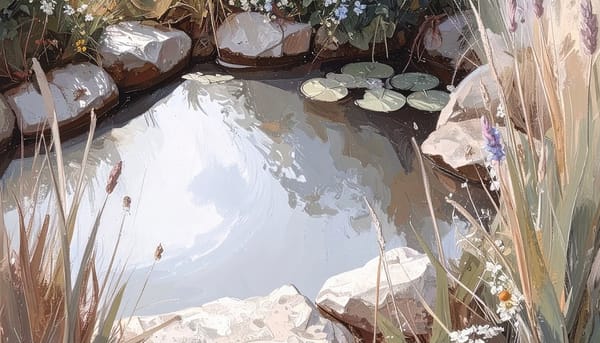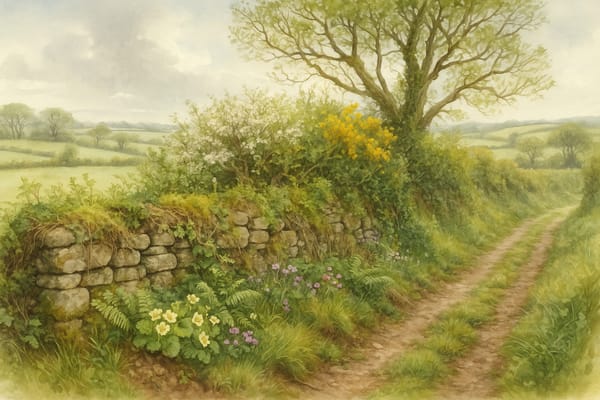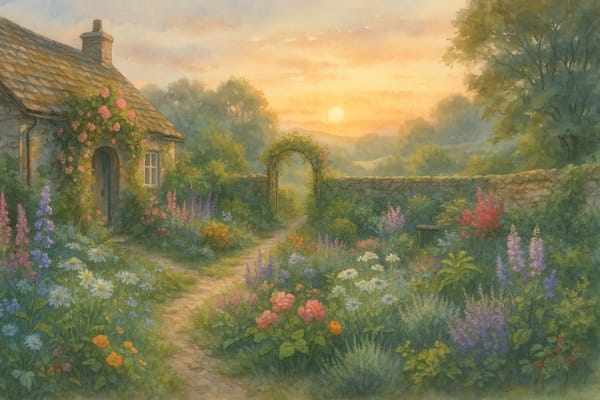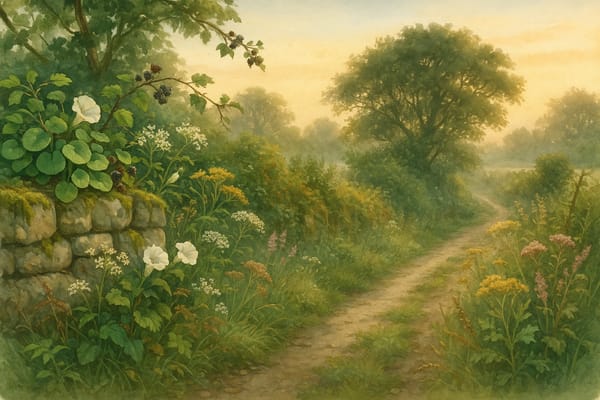There are few garden features that deliver the magic, movement, and ecological richness of a wild pond. In Cornwall—where mild temperatures, generous rainfall, and unique flora meet—wild ponds become more than decorative water features; they are thriving habitats, living ecosystems that invite nature in and give something meaningful back.
At a time when biodiversity is under threat, a thoughtfully designed pond can transform even the smallest plot into a vital wildlife corridor, creating beauty, balance, and a lasting legacy.
Why Wild Ponds Matter
Ponds designed for wildlife—rather than ornament—act as miniature wetlands in your garden. They support amphibians, aquatic insects, birds, and pollinators, often attracting over a hundred species within their first year.
Unlike formal ponds, wild ponds depend on natural planting, varied depths, and gentle slopes. They don't need fish, fountains, or chemical treatments—just a commitment to local species, clean water, and a respect for natural processes.
Designing for Wildlife: The Essentials
1. Prioritise Native Plants
Choose aquatic and marginal species that naturally occur in Cornwall’s ponds and wetlands. This supports the food web and prevents the introduction of invasive species.
Recommended Pond Plants:
| Zone | Example Species | Wildlife Benefit |
|---|
| Submerged | Hornwort, Water Crowfoot | Oxygenation, amphibian habitat |
| Floating | Yellow Water-Lily, Bog Pondweed | Shade, refuge, invertebrate shelter |
| Marginal | Marsh Marigold, Water Forget-Me-Not, Yellow Flag Iris | Nectar for pollinators, amphibian cover |
Plant in clusters or baskets to control spread, and combine species for structure and interest.
2. Create Varied Depths and Natural Edges
From shallow beaches (less than 10 cm) for birds and small mammals to deeper zones (60–80 cm) for amphibians, a range of depths encourages diversity. Irregular edges, gentle slopes, and peninsulas increase habitat zones.
3. Keep It Fish-Free
Avoid adding fish, which predate amphibian eggs and aquatic invertebrates. A fish-free pond is healthier for wildlife.
4. Use Sustainable, Natural Materials
Favour local stone, reclaimed timber, and natural liners such as clay or recycled EPDM rubber. For small ponds, repurposed containers like barrels or troughs make excellent mini habitats.
Planting Beyond the Pond
Surround the pond with wildflower meadows, native grasses, and habitat features like log piles, rock stacks, and hibernacula. These offer food, shelter, and safe corridors for wildlife moving between land and water.
Managing Your Pond with Wildlife in Mind
- Monitor invasive species and remove promptly.
- Top up in drought with rainwater—not tap water.
- Leave some leaf litter and debris in autumn for overwintering creatures.
- Cut vegetation selectively to allow refuge areas year-round.
Sustainable Choices for Eco-Friendly Ponds
| Material | Sustainable Option | Benefit |
|---|
| Liner | Clay, recycled EPDM | Natural integration, durability |
| Hardscaping | Local stone, reclaimed wood | Blends with landscape, wildlife shelter |
| Plant Media | Local clay loam, coarse gravel | Supports planting, prevents water clouding |
| Accessories | Solar pumps, recycled edging | Low energy, reduced waste |
Wildlife Benefits in Every Season
- Spring: Amphibians breed; aquatic insects hatch.
- Summer: Pollinators thrive on flowering margins.
- Autumn: Frogs, newts, and mammals seek shelter around the pond.
- Winter: Wildlife uses the pond and edges for refuge.
The Wider Impact: A Pond’s Role in Cornwall’s Ecosystem
Wild ponds are more than private projects—they are stepping stones in the larger environmental picture. They help pollinators move through fragmented landscapes, provide breeding grounds for declining amphibians, and offer vital ecosystem services like natural pest control, water filtration, and flood mitigation.
Whether you’re on a windswept coastal edge or nestled in a wooded valley, your pond becomes a sanctuary—not just for wildlife, but for yourself. It’s a place where nature’s rhythms play out, season by season, in a living tapestry of water, light, and life.
Ready to Begin?
For advice, native plant lists, or eco-friendly pond supplies, check resources like Cornwall Wildlife Trust or specialist designers like Lost Habitat. Your wild pond could become a cherished feature in your garden—and a small but powerful contribution to Cornwall’s living landscape.











